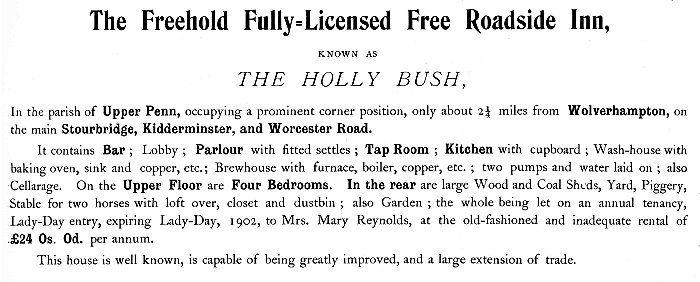| The principal crops at Penn were wheat, barley, oats, potatoes, and
peas. There were also cows and pigs. By 1851 there were 716
inhabitants. The principal landowners were the Duke of Sutherland, John W.
Sparrow of Penn Hall, Rev. William Dalton of Lloyd House,
Robert Thacker of Muchall Hall, and Sidney Cartwright of The
Leasowes. The Hollybush
One of Penn's older pubs is The Holly Bush, which had opened by
1834 under the name Old Holly Bush. The first licensee was Thomas
Davies who kept a tame monkey for the amusement of his customers.
The original building was described as a quaint timber and brick
structure with a thatched roof and a low taproom with a wide
chimney. It stood on the site of the existing pub. By 1834 it was known as The Holly Bush,
owned by the devisees of Richard Taylor and run by John Fox.
In the 1881 census, William Reynolds was the licensee. He lived
there with his wife Mary and their three daughters, who were all
barmaids. By 1891 William had died and his widow, Mary was licensee.
The Hollybush was once part of the Lloyd Estate, which was
sold-off in 1901.

From the 1901 Lloyd Estate sales brochure.
The original Hollybush was demolished and replaced in 1937 by
today's much larger building.
|